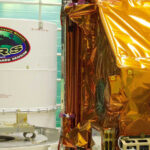Google Maps users have been left puzzled after discovering a mysterious skull-like formation off the coast of Cormorant Island, Canada. Some enthusiasts have even speculated that it could be evidence of alien visitors. This curious sighting has quickly become a topic of fascination among internet users, sparking debates and theories about its origins.
The unusual structure, which appears to resemble a human skull, is located on the northern coast of Cormorant Island, just off Canada’s northeast coast. When viewed from the north, a sandbank beneath the water reveals this distinct shape. The discovery was first highlighted by Scott Waring, founder of UFO Sightings Daily, who suggested that ancient aliens might have created the skull as a sign for others.
Alien Theories and Scientific Explanations
Waring’s claims have captured the imagination of many, with social media users expressing their amazement. One user commented, “That’s actually incredible. It’s amazing!!” while another echoed the sentiment of wanting to believe in extraterrestrial involvement. Despite the enthusiasm, scientists offer a more grounded explanation for the phenomenon.
Philip Mantle, a UFO researcher, dismissed the idea of alien involvement, suggesting instead that the formation could simply be a natural rock formation. “There are no signs that alien life forms have visited the earth in antiquity and left evidence of such,” Mantle stated. This perspective is supported by the scientific community, which points to a psychological phenomenon known as pareidolia.
The Science Behind Seeing Faces
Pareidolia is a psychological response where people perceive familiar patterns, like faces, in random stimuli. Dr. Robin Kramer, an expert on face perception from the University of Lincoln, explained, “Our face detection system has evolved to be great at detecting faces, and it makes more sense to err on the side of caution by occasionally seeing faces where there aren’t any, rather than missing faces where there are.”
Scientists call this phenomenon pareidolia, which is a bias towards seeing meaningful patterns in inanimate objects.
Professor Kevin Brooks from Macquarie University added, “We tend to classify anything vaguely face-like as a face until proven otherwise – it’s safer that way.” This evolutionary trait likely helped early humans survive by quickly identifying friends or foes.
Implications of Pareidolia and Belief Systems
Dr. Susan Wardle, a researcher at the National Institutes of Health, noted that while pareidolia is common, a high rate of such experiences might indicate a bias towards paranormal beliefs. A Finnish study from 2012 found that individuals with strong religious or paranormal beliefs were more prone to seeing faces in random stimuli.
“Most people who see faces in things recognize that the faces are not real,” Dr. Wardle said. “Issues can arise when people interpret visual patterns to have meaning that they do not, or when they have difficulty distinguishing true perceptions from illusory ones.”
This phenomenon has led to numerous claims of religious images or alien artifacts in various locations, including the famous “face on Mars” seen by Viking orbiters in 1976, which was later debunked as a natural formation.
Looking Ahead
While the skull-like formation off Cormorant Island continues to intrigue and spark debate, it serves as a reminder of the human tendency to find patterns in the world around us. Whether a product of natural forces or a figment of our imagination, the sighting highlights the enduring allure of the unknown and the mysteries that still captivate our collective curiosity.
 Why Satellites Use ‘Gold Foil’ for Thermal Protection in Space
Why Satellites Use ‘Gold Foil’ for Thermal Protection in Space World’s First Anti-Sickness Car Promises a Smoother Ride for Motion-Sensitive Drivers
World’s First Anti-Sickness Car Promises a Smoother Ride for Motion-Sensitive Drivers World’s First Anti-Sickness Car Promises a Smoother Ride for Motion-Sick Passengers
World’s First Anti-Sickness Car Promises a Smoother Ride for Motion-Sick Passengers World’s First Anti-Sickness Car: A Breakthrough in Comfort and Technology
World’s First Anti-Sickness Car: A Breakthrough in Comfort and Technology Yulia Putintseva Requests Spectator Removal at Wimbledon Over Safety Concerns
Yulia Putintseva Requests Spectator Removal at Wimbledon Over Safety Concerns